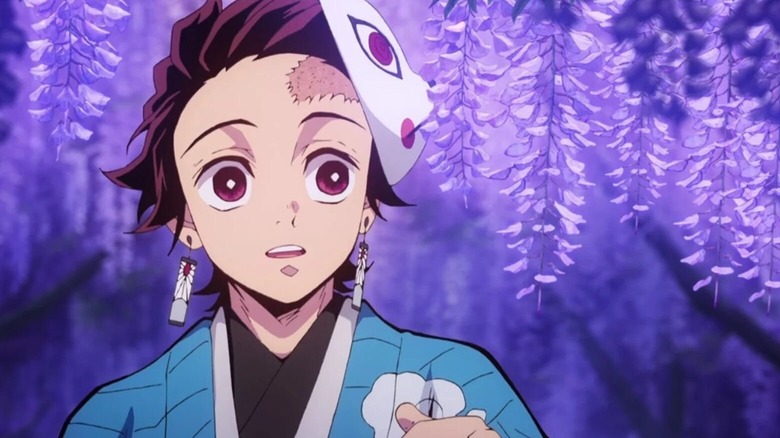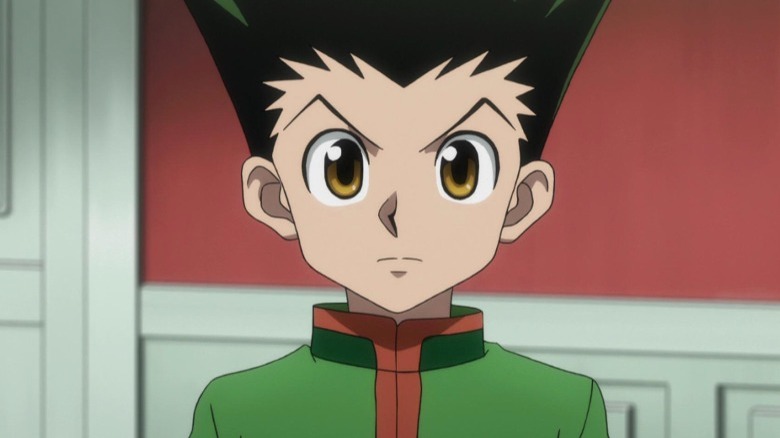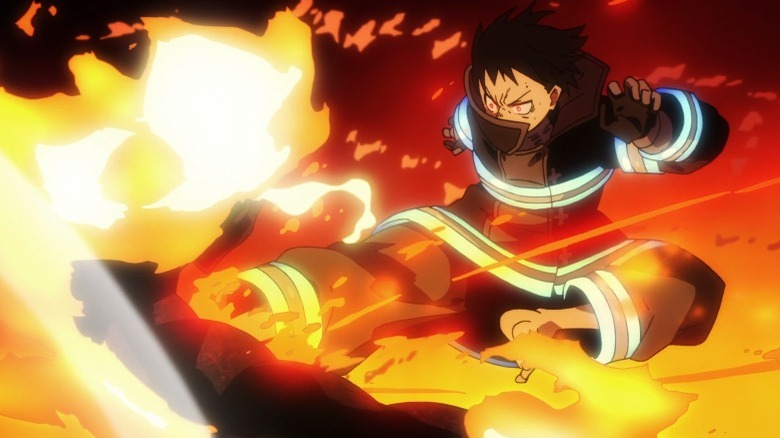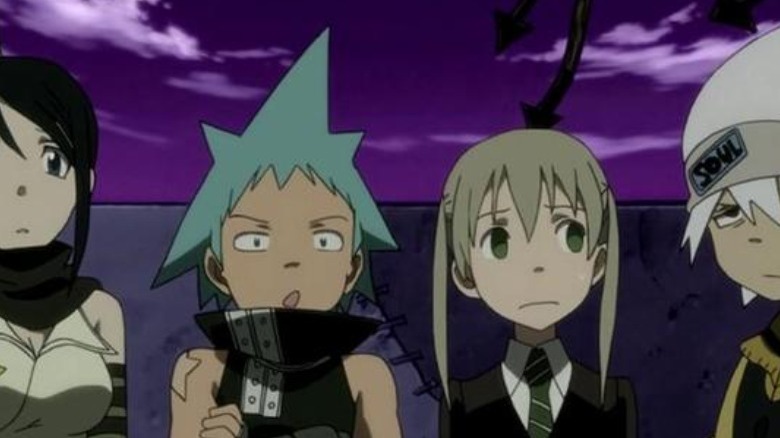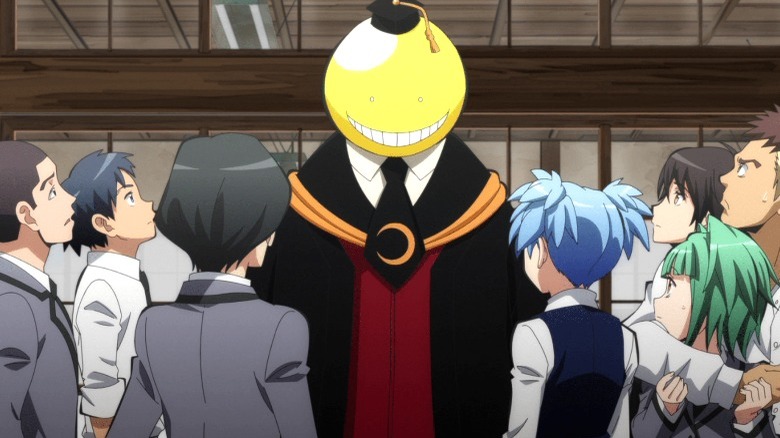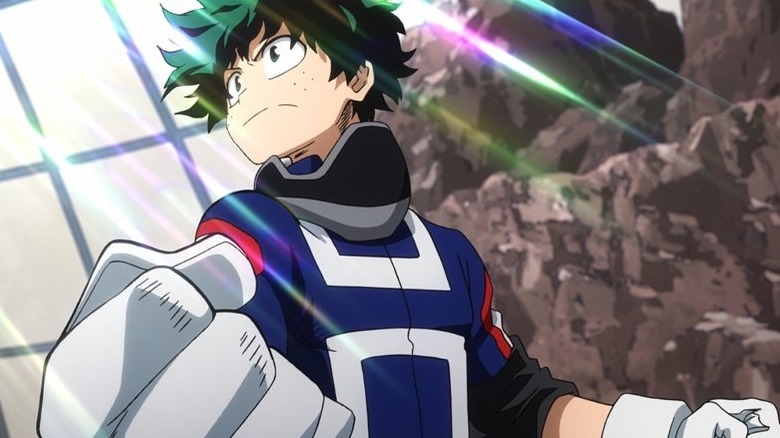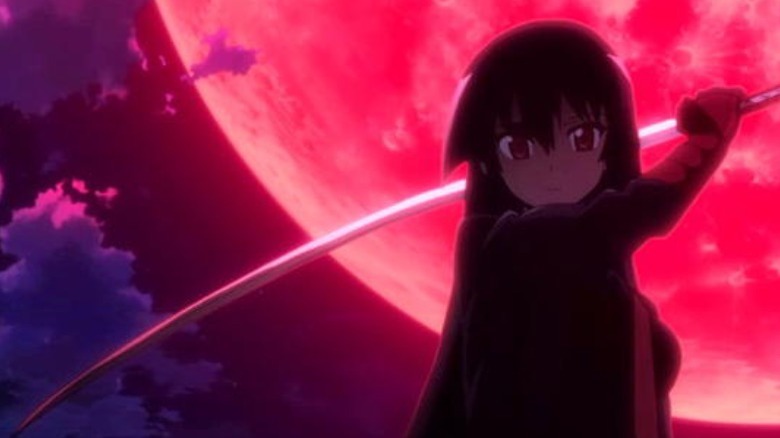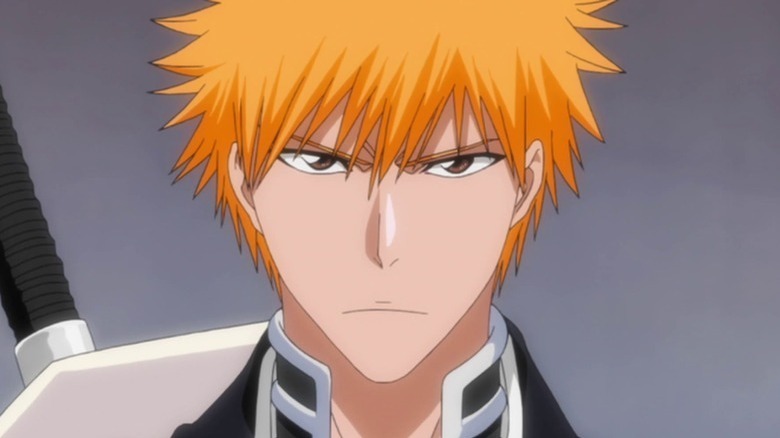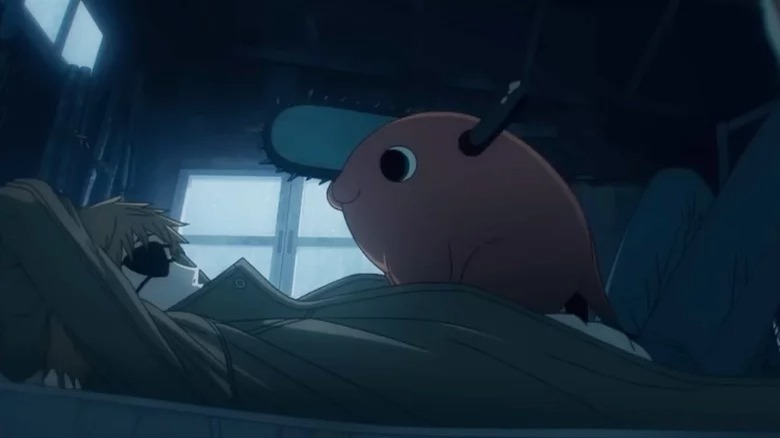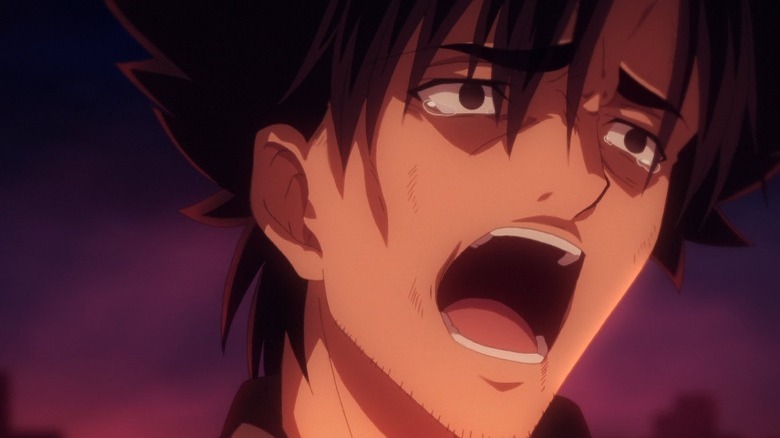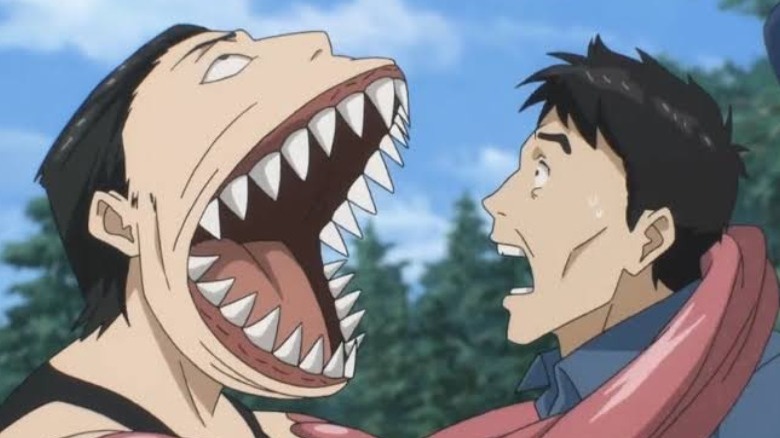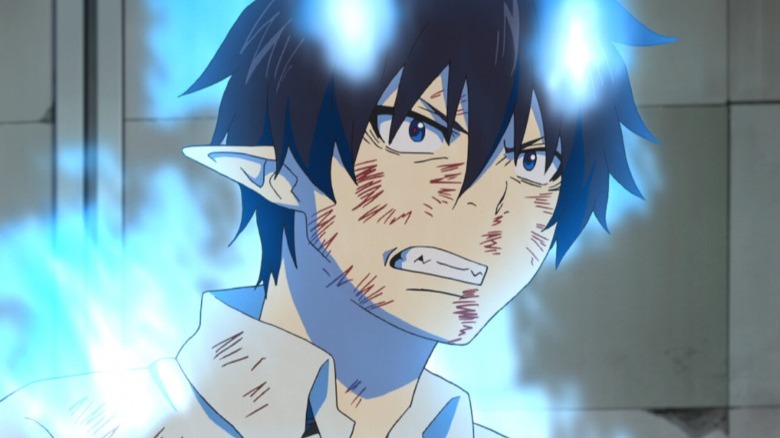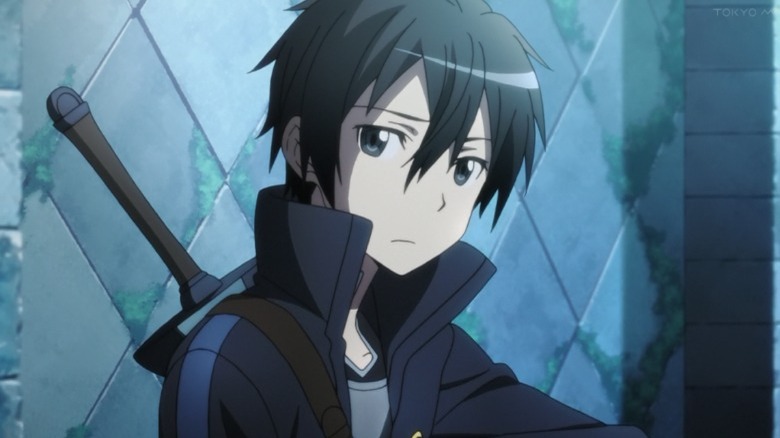12 Anime Shows Like Demon Slayer That You Can Binge Today
"Demon Slayer: Kimetsu no Yaiba" is a remarkably popular series. The manga of the same name currently has over 150 million copies in circulation, and the television anime adaptation, created by anime juggernauts Ufotable, is listed among IGN's best anime series of all time despite only having premiered in 2019. The show resonates profoundly on multiple levels as it tracks hero Tanjiro Kamado and his quest to vanquish Kibutsuji, the demon responsible for turning his sister, Nezuko, into one of the same.
The conventional shōnen elements are all there. Tanjiro, for his part, is unequivocally good. Yet, the way the show merges familiar elements into something wholly unique and resonant is unmatched. Its most recent season, the "Entertainment District" arc, ended wonderfully, and with a forthcoming third season on the way, fans are likely as eager as ever to find something to mind the gap. Like the best of them, "Demon Slayer: Kimetsu no Yaiba" is gateway anime, an entry point for those unfamiliar with the genre. Here, we're looking at 12 shows that satisfy that same bloody, sweet shōnen itch.
Hunter x Hunter
"Hunter x Hunter" might arguably be the best shōnen anime ever produced. While it's a contentious claim, and there's reasonable arguments to the contrary, there's no denying it's an enduring slice of anime history, a show (much like "Demon Slayer") that has transcended niche circles to become a full-throttle pop culture phenomenon (just go to any BoxLunch or Hot Topic for proof). Ostensibly the story of young hunter Gon and his quest to find his father, the series unspools into something considerably more profound, with arcs such as the Chimera ant beats that are all but unrivaled in the anime sphere.
While its cheerful protagonist and resistance toward strong violence might seem at odds with the work being done on "Demon Slayer," the two share more connective tissue than might be first apparent. The "Chimera Ant" arc, in particular, is almost a spiritual precursor to "Demon Slayer's" lofty, moralistic inquires. The nature of good and evil, fate and circumstance, and sundry other heady topics come into play. "Hunter x Hunter" plays with genre, and most importantly, shōnen expectations. There are twinkles of "Hunter x Hunter's" best in "Demon Slayer," likely accounting, in part, for its skyrocketing success.
Fire Force
In "Demon Slayer," Tanjiro is committed to tracking down the demon responsible for turning his sister in hopes of saving her from a fate alleged to be worse than death. In "Fire Force" by David Production follows fire soldier Shinra Kusakabe and his quest to save his brother and, ultimately, find out the truth about his mother's death. If it sounds familiar, it's because it is, but "Fire Force," like Atsushi Ohkubo's other series, "Soul Eater," consistently transcends expectations. With its bass-heavy action sequences, a smattering of heart, and fatalistic interrogations, it's no less a visual or thematic treat than "Demon Slayer."
The core connective tissue might seem small, but both series deserve credit for their treatment of their antagonists. Both the demons in "Demon Slayer" and the Infernals (humans who have spontaneously combusted) in "Fire Force" are treated as human beings led astray. The protagonists of both series see them as more than monsters. Instead, they're perceived as damned souls, and both Tanjiro and Shinra make it their mission to not just slaughter them but save them, absolving their souls of sin in the process. It's weighty stuff, par for the course with shōnen series, but remarkably thrilling all the same.
Soul Eater
Where "Demon Slayer" has its demons and "Fire Force" has its combustion, writer Atsushi Ohkubo's "Soul Eater," confirmed by the creator himself to be a sequel to "Fire Force," has its Kishin. While they're still demons, they're miraculously powerful beings conceived when pure human souls are harvested and merged. Like "Fire Force" (though how they connect remains unseen), it parallels incredibly well with the thematic underpinnings of "Demon Slayer." Better still, its protagonist, Maka, is a girl, a welcome change of pace within the larger canon of accessible action anime.
Pursuant to some key metrics, "Demon Slayer" is "Soul Eater's" more adult successor. In terms of action and conflict, the two follow the same thrilling beats, pitting its characters against a revolving door of monstrous beings while honing their combat prowess for bigger, more terrifying threats. "Demon Slayer" spills more blood, at times relishing the sheer horror and gruesome savagery on display, but for newer fans or those a bit too young for "Demon Slayer's" mature framework, "Soul Eater" is as perfect an entry point as any.
Assassination Classroom
On the surface, Yusei Matsui's "Assassination Classroom" is about as diametrically different from "Demon Slayer" as an anime can get. While "Demon Slayer" adheres to the well-trod path of the shōnen that came before, "Assassination Classroom" is a truncated morality play and a pretty effective one at that. Koro-sensei, an alien being, has promised to destroy the world in a year, assuming no one is capable of assassinating him in the interim. While government efforts have failed, Koro-sensei suggests Class 3-E, a group of delinquent middle schoolers at Kunugigaoka Junior High School, be trained to take him out. Better still, he requests that he be the one to train them. In other words, they're an assassination classroom. Alongside math and science, they're being trained to kill.
Yet, for as different as their subgenres are, the underlying ethos is remarkably similar, especially matters of fate, the futility of vengeance, and the enduring nature of one's most precious memories. Both strike the heart as often as they dazzle with their action sequences (and despite the slice-of-life framework, "Assassination Classroom" has plenty of action), and both are as liable to elicit applause as they are tears. Not that it needs to be said, but in terms of anime as a bona fide art form that can meet or exceed the conventions of live action, it rarely gets more affecting than "Assassination Classroom."
My Hero Academia
The first four seasons of "My Hero Academia" don't have a great deal in common with "Demon Slayer." While both are shōnen series, and "My Hero" protagonist Izuku Midoriya and Tanjiro Kamado are likely the nicest guys ever, almost innately beyond reproach, "My Hero Academia" is considerably more accessible, playing with Western superhero tropes for its story of a young boy going from, well, zero to hero in no time flat. Yet, with the show's fifth season foray into much darker material ("Tenko Shimura: Origin" still haunts me), the once commercial anime is veering much closer to "Demon Slayer" than its early episodes would suggest.
Season 5 sees villain Tomura Shigaraki's plan to turn the world against heroes and destroy the symbol of peace have more success than ever, resulting in plenty of bloodshed and tragedy along the way. With the stark departure, "My Hero Academia" no longer feels as safe as its cartoonish, happy-go-lucky origins led audiences to believe. The aforementioned "Tenko Shimura: Origin" is as tragic and bloody as anything anime has offered before, and with the more violent material, protagonist Midoriya is thematically linked to the likes of Tanjiro. Being a hero isn't so easy after all. There are real consequences. Real bloodshed. Real pain.
Akame ga Kill!
The title of "Akame ga Kill!" doesn't lie. This series abounds with deaths, some at the hands of protagonist Akame, the sword-carrying member of Night Raid, and plenty of others at the hands of all manner of baddies. Night Raid is introduced through the eyes of fresh recruit Tatsumi. The members all wield Imperial Arms, unique weaponry created millennia ago, the power of which is strong enough to defeat most enemies, with the chief caveat that if two wielders face off, one is bound to die.
Tasked with assassinating political enemies and tyrants, the short series is a masterstroke of brutal violence and political resiliency, even if it's more likely than most to devastate its audience along the way. No one here is safe, and like "Attack on Titan," it's not worth getting too attached to any particular character because odds are they won't make it to the finale. The violence parallels "Demon Slayer's," as does its preeminent interest in the innate humanity of all persons, good, bad, and everything in between. Stylistically compelling, it's a grim yet noteworthy addendum to the work "Demon Slayer" carries on.
Bleach
"Bleach" fans are living in anime nirvana right now. Recently, "Bleach: Thousand-Year Blood War" premiered on Hulu and Disney+ in select territories. A sequel series that covers the manga's final arc, fans are thrilled to see the long-running franchise get the proper ending it deserves. It's been remarkably well received, a fitting end to one of anime's greatest. At the start, "Bleach" follows Ichigo Kurosaki, a young man who gains the powers of a Soul Reaper. With his newfound abilities, he must simultaneously defend humans from the evil spirits of the dead while guiding them toward the afterlife.
Like "Demon Slayer" (and most anime, truthfully), "Bleach" is a swirling vortex of religious iconography, themes, and spiritual undercurrents. Similarly, it rejects notions of pure good or evil and instead explores the nuance therein. While it's not quite as violent or hard-hitting as "Demon Slayer," "Blood War" notwithstanding, it's an accessible (and classic) example of shōnen anime at its best.
Chainsaw Man
"Chainsaw Man" is the newest entry on this list. Widely anticipated and critically praised, the series may have just premiered, though it's poised to be the next anime must-watch. The anime follows the titular "Chainsaw Man" who is first introduced as Denji, a poor teenager bearing an enormous debt. It's a heartrending introduction that immediately distinguishes him from the likes of Deku or Gon. His upbringing is grim, much like "Demon Slayer's" Tanjiro, and consequently, he has little choice but to become a demon fighter.
And a demon fighter he becomes. Denji joins the Public Safety Devil Hunters, a government agency that focuses on combatting a burgeoning devil (demon) threat. If it sounds familiar, it's because it is. Yet, like "Demon Slayer," it's not the conceit that matters most, but the execution. "Chainsaw Man" is hyper-stylized and violent, and the requisite carnage the title suggests is there in all its gory glory. It started as strong as "Demon Slayer," and while time will tell, it's looking likely to be just as consistently thrilling.
Fate/Zero
"Fate/Zero" is considerably slower than most other anime. It's not until the second season that the full scope of Gen Urobuchi's story comes to light. A prequel series to "Fate/Stay Night," the series follows the overarching Holy Grail War, a magical tournament in which participants seek the assistance of deceased heroes to win the titular Grail, which is capable of granting any wish the participants can envision. The heroes run the gamut from Gilgamesh to King Arthur, all beautifully rendered in ways that both honor and diverge wonderfully from their source material.
While it's considerably less action-focused than "Demon Slayer," the heart and profundity of its merging of magic and classic swordsmanship remain enduring high points. It's dour stuff, and its mythology and lore are denser than "Demon Slayer's," but as a brief foray into headier material in anticipation of "Demon Slayer's" forthcoming third arc, it's remarkably thrilling.
Parasyte -the maxim-
While "Demon Slayer" is very much a shōnen anime, it additionally works well as a horror-adjacent property. While never especially scary, it's hard to not be horrified as the "Entertainment District Arc" collapses into flames, echoing real tragedy with a scale and attention to detail not often seen. Hitoshi Iwaaki's "Parasyte" veers considerably closer to horror, but its thematic structure is much like "Demon Slayer's," making it the perfect companion for fans of the former who wish Tanjiro's quest was just a little bit scarier.
Shinichi Izumi is a high school senior whose body is taken over by a parasitic alien organism. Izumi miraculously survives, preventing the parasite from completely taking over his body. Instead, like "Chainsaw Man," he gets a wickedly cool alien arm that allows him to effectively combat other parasitic organisms strewn about town. Pondering deep philosophical questions about the nature of humanity, the environment, and the roots of good and evil, it's no less heavy than "Demon Slayer" and no less compelling.
Blue Exorcist
"Blue Exorcist" has it all. Protagonist Rin Okumura is as cool (and capable) as any shōnen hero. He's hard-headed, extraordinarily capable, and motivated to fight the forces of evil because of a personal tragedy. The action is gorgeously animated, there are heaps of friendship overcoming all odds, and there are even plenty of darker, grimmer undercurrents for the fans who think they've seen it all before.
Additionally, "Blue Exorcist" doubles down on the sibling angle, allowing Okumura and his twin brother, Yukio, to take down Satan together. A lot like "Demon Slayer," it's thrilling to see two siblings tackle the greatest forces of evil together, doing so with plenty of grit, humor, and violence along the way. Like "Demon Slayer," there's a pretty sensational feature-length movie to bridge a season's gap. Both "Blue Exorcist" and "Blue Exorcist: The Movie" are worth checking out for more demon-slaying family action.
Sword Art Online
"Sword Art Online" is considerably more "anime" than "Demon Slayer." With a movie, various series, and dovetailing franchise entries, it's not necessarily the most accessible entry point for the burgeoning anime fan, especially those bewitched by "Demon Slayer" and eager to find anime that is much the same. While "Sword Art Online" won't work for every "Demon Slayer" fan with its more mainstream, commercial Western feel, it's worth checking out. The more time fans spend in its digital world, the clearer the links to "Demon Slayer" become.
Taking place in the near future, "Sword Art Online" follows its protagonists as they play through MMORPG worlds. It's a conventional, childhood fantasy, fictionalizing the early aughts' wish to live in the worlds of "World of Warcraft" or "Everquest" — a kind of fantastical "Ready Player One." Kirito and "Demon Slayer's" Tanjiro have a lot in common, and truth be told, the heart is as strong in both. Stylistically, they might not seem that much alike, but dig beneath the surface, and you will find the action-packed beating heart that binds them together.
